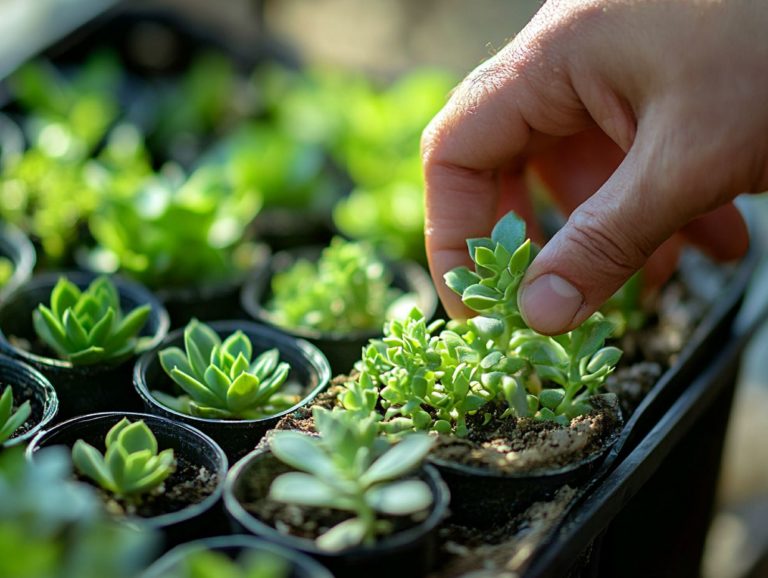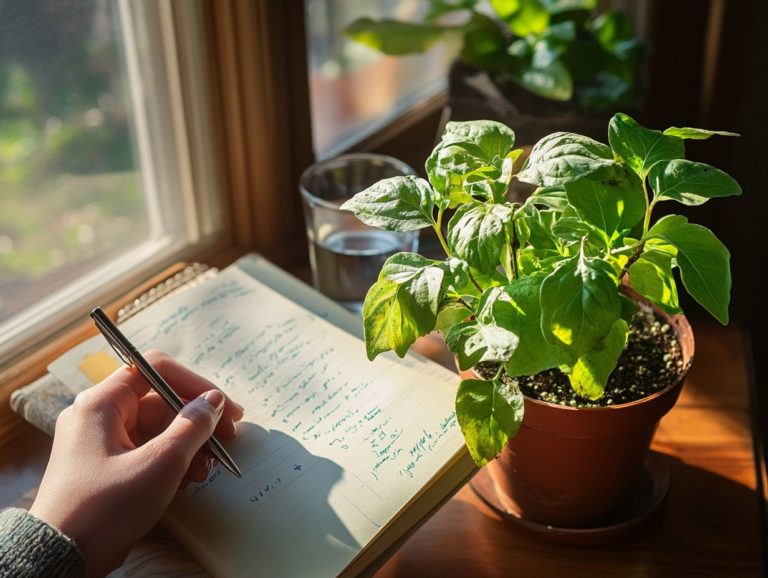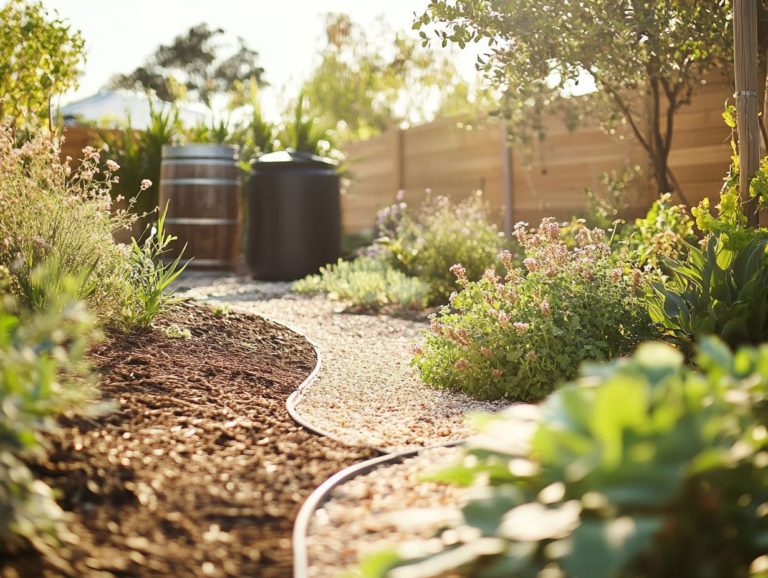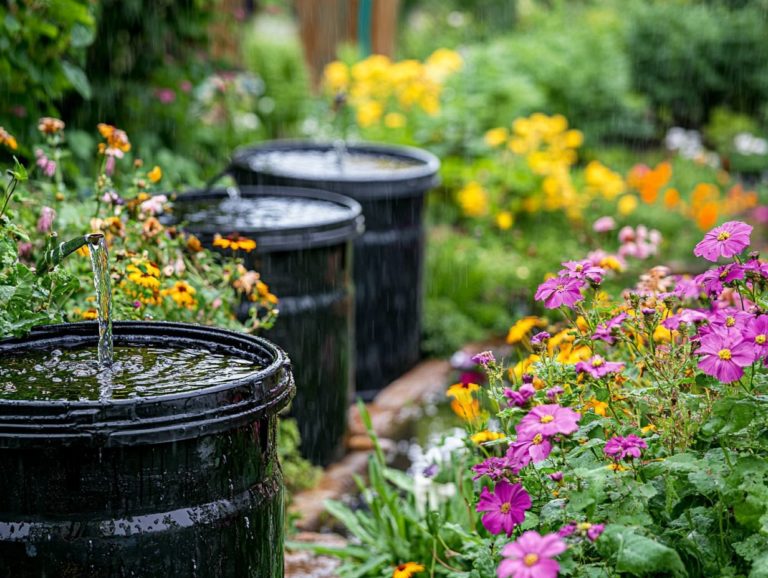How to Revive Drought-Resistant Plants
It’s exciting to learn about drought-resistant plants! These remarkable survivors are expertly adapted to flourish even in challenging conditions.
Grasping the qualities that make these plants resilient is essential for creating a thriving garden, even in dry climates.
This guide will empower you to recognize signs of drought stress, rejuvenate struggling plants with effective watering and care techniques, and choose the right species for your environment to prevent future issues.
Discover how to craft a vibrant, drought-resistant garden that not only endures but thrives over time!
Contents
- Key Takeaways:
- Understanding Drought-Resistant Plants
- Signs of Drought Stress
- Reviving Drought-Resistant Plants
- Preventing Drought Stress in Plants
- Frequently Asked Questions
- 1. How do I know if my drought-resistant plant needs to be revived?
- 2. What is the best way to revive a drought-resistant plant?
- 3. How often should I water a drought-resistant plant?
- 4. Can I use fertilizer to revive my drought-resistant plant?
- 5. What should I do if my drought-resistant plant is severely wilted or damaged?
- 6. Are there any maintenance tips for keeping my drought-resistant plants healthy?
Key Takeaways:

- Understanding what makes a plant drought-resistant is crucial for reviving them.
- Recognizing signs of drought stress and addressing them promptly can save your plants.
- Reviving drought-resistant plants requires proper watering techniques, mulching, and fertilizing.
Understanding Drought-Resistant Plants
Drought-resistant plants thrive even when water is scarce. For those looking to cultivate them successfully, understanding the seasonal care for drought-tolerant species is essential, as these resilient species are uniquely adapted to flourish during dry spells.
By choosing drought-tolerant varieties, you can create vibrant landscapes that save water. Not only do these plants endure dry times, but they also attract beneficial pollinators like bees and butterflies, enriching your garden’s biodiversity.
Embracing these hardy selections results in healthier plants and promotes sustainable gardening practices.
What Makes a Plant Drought-Resistant?
The essential traits that grant drought resistance in plants stem from their remarkable adaptations, which enhance their ability to use water efficiently and retain soil moisture.
Consider the deep or extensive root systems that allow some plants, like mesquite trees, to tap into moisture deep within the soil. Specialized leaves, which may have reduced surface areas or waxy coatings, play a crucial role in minimizing water loss. Take succulents like aloe vera; their thick, fleshy leaves are designed to store water effectively.
You can also improve soil quality by using techniques like mulching and adding organic matter, which help retain water. By adopting these strategies, resilient species like cacti and certain native grasses can flourish even in arid environments, beautifully illustrating the connection between plant traits and their surroundings.
Signs of Drought Stress
Recognizing the signs of drought stress in your plants is essential for effective gardening and ensuring their health. When plants experience drought stress, they exhibit specific symptoms that signal their urgent need for your care.
Observing these indicators will enable you to take timely action and nurture your garden with the expertise it deserves.
Identifying Symptoms in Plants

Identifying symptoms in drought-stressed plants is crucial for their recovery. These indicators signal an urgent need for your thoughtful care.
Symptoms like wilting leaves, browning edges, and stunted growth reveal a plant’s struggle to thrive. When you check soil moisture, remember to assess the top couple of inches; if it feels dry to the touch, it s time for a deep watering session. If the soil is soggy or perpetually damp, you may be facing the risks of overwatering.
Key signs to keep an eye on include:
- Yellowing leaves and root rot, which indicate too much water.
- Dry, brittle foliage, signaling a lack of moisture.
By monitoring these conditions diligently, you can restore your green companions to their former glory. Take action now to save your plants!
Reviving Drought-Resistant Plants
Reviving drought-resistant plants that have endured insufficient water supply demands a thoughtful approach. You’ll want to use effective watering techniques, apply organic fertilizers, and utilize protective measures like mulch to shield their roots and retain soil moisture. For specific strategies, check out this guide on winter care for drought-resistant plants.
This combination will ensure your plants not only survive but thrive.
Proper Watering Techniques
Using proper watering techniques is crucial for reviving your plants after they’ve faced drought stress. Additionally, learning techniques for propagating drought plants ensures immediate recovery and long-term health.
By using methods like deep watering, you encourage roots to reach deeper into the soil, accessing essential nutrients that speed up recovery. Establish a consistent watering schedule tailored to the unique needs of each plant; remember, overwatering can be just as harmful as letting them dry out. For more information, check out the best seasonal care for drought plants. Consider using irrigation controllers, devices that automatically water your plants based on the weather, to streamline this process.
To know when your plants need water, monitor soil moisture levels and look for wilting leaves these are your practical indicators. Incorporating mulch helps conserve water by retaining soil moisture, ultimately enhancing your plants health.
Applying Mulch and Fertilizer
Get excited! Applying mulch and organic fertilizers is key to helping your drought-resistant plants flourish. It improves soil health and moisture retention while protecting root systems from extreme temperatures.
You ll find a variety of mulch types available to suit your needs, including:
- wood chips
- straw
- grass clippings
- shredded leaves
Each offers unique benefits. For instance, wood chips break down slowly, creating a long-lasting layer that effectively inhibits weed growth and retains moisture. Straw decomposes quickly and is lightweight, making it easy to apply.
Using organic fertilizers replenishes essential nutrients in the soil, ensuring your plants have everything they need to thrive. For the best results, apply mulch in the spring to suppress weeds as they start to emerge; organic fertilizers should be used during the growing season when your plants can absorb nutrients efficiently.
Preventing Drought Stress in Plants

Preventing drought stress in your plants is essential for nurturing a vibrant garden, and it starts with a discerning approach to plant selection. By choosing drought-tolerant species that are well-suited to your climate, you lay the foundation for a thriving landscape that withstands the challenges of limited moisture.
Choosing the Right Plants for Your Climate
Choosing the right plants for your climate is crucial for cultivating a sustainable garden that thrives even during drought conditions. It s essential to focus on drought-tolerant species.
Understanding local climate factors like temperature extremes, rainfall patterns, and soil types will guide you in selecting the best plants for your garden. Native plants deserve special attention as they ve evolved to adapt seamlessly to local environments, requiring less water and maintenance over time.
Take the ice plant, known for its bright flowers and ability to thrive in dry conditions. Then there’s Veronica, or speedwell, which not only adds stunning blossoms but also attracts pollinators, making it a stellar choice for your garden.
These species excel even in challenging situations while fostering a healthy ecosystem, enhancing biodiversity, and promoting soil stability.
Start selecting the right plants for your climate today to create a sustainable garden that survives drought!
Creating a Drought-Resistant Garden
Transform your space into a stunning drought-resistant garden! Not only will it thrive on minimal water, but it will also be a beautiful sanctuary.
Creating a drought-resistant garden focuses on water conservation. You can include plants that thrive on minimal moisture without sacrificing beauty.
By thoughtfully selecting and arranging plants with similar water needs, you can significantly cut down on waste. Each specimen will flourish in its designated spot.
Incorporating landscaping features like gravel pathways and stone seating areas elevates the visual appeal of your garden. This also reduces the need for frequent watering.
Leveraging the natural contours of your landscape enhances water retention and drainage, fostering a more sustainable ecosystem.
For example, introducing native plants such as lavender and sedum infuses vibrant colors and textures into your garden while requiring little irrigation. This approach leads to a thriving, low-maintenance oasis.
Frequently Asked Questions
1. How do I know if my drought-resistant plant needs to be revived?

Drought-resistant plants typically show signs of wilting, yellowing leaves, and drooping stems when they need to be revived. Implementing organic treatments for drought-resistant gardens can help address issues such as dry, brittle stems and a lack of new growth.
2. What is the best way to revive a drought-resistant plant?
The best way to revive a drought-resistant plant is to water it deeply and consistently. For optimal results, knowing when to water drought-resistant plants allows the plant to absorb water and nutrients, helping it recover. Provide adequate sunlight and ensure proper drainage for the plant.
3. How often should I water a drought-resistant plant?
Drought-resistant plants should be watered deeply once a week during periods of drought or intense heat. However, it’s important to check the soil moisture before watering, as each plant’s needs may vary. For more guidance, consider these tips for maintaining plant health in drought.
4. Can I use fertilizer to revive my drought-resistant plant?
While fertilizer can be beneficial for plants, it should not be used as a means to revive a drought-resistant plant. Fertilizer can actually add stress to a struggling plant and may cause further damage.
5. What should I do if my drought-resistant plant is severely wilted or damaged?
If your plant is severely wilted or damaged, it may be too late to revive it. In this case, remove the plant and replace it with a new, healthy one. Regularly monitor your plants and provide proper care to prevent them from becoming too damaged.
6. Are there any maintenance tips for keeping my drought-resistant plants healthy?
To keep your drought-resistant plants healthy, regularly check for signs of stress. Providing proper watering and sunlight is crucial, along with removing any dead or damaged foliage. Using the top tools for caring for drought plants can also help ensure they thrive. Give your plants enough space to grow and avoid overcrowding, which can lead to competition for resources.






